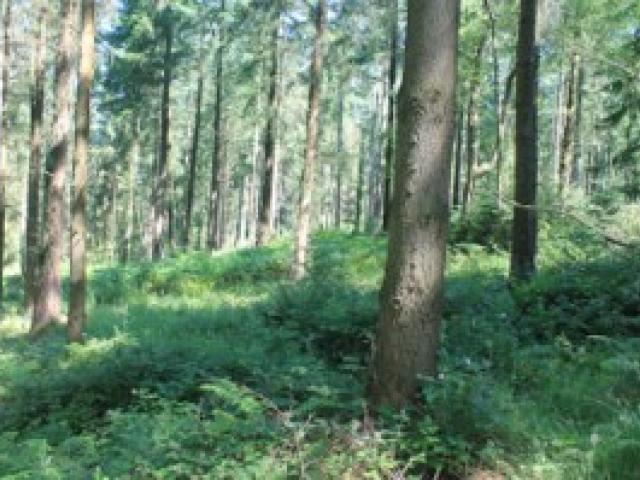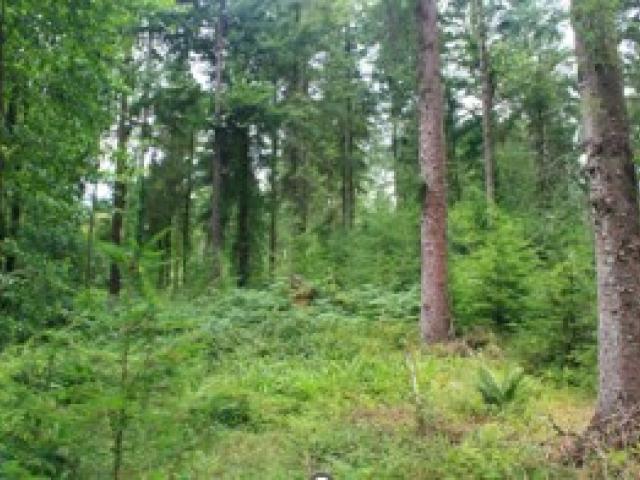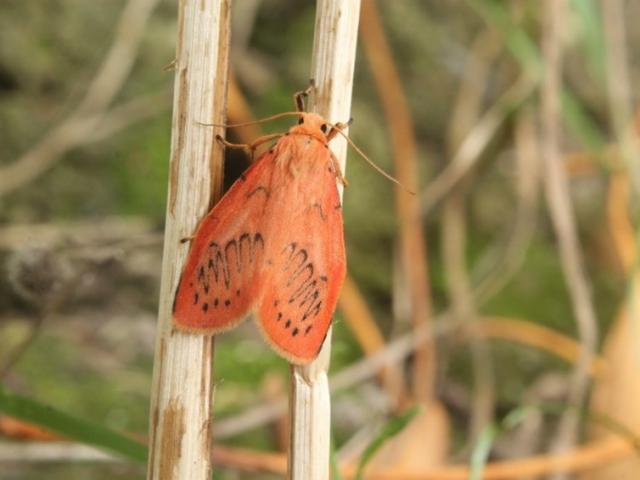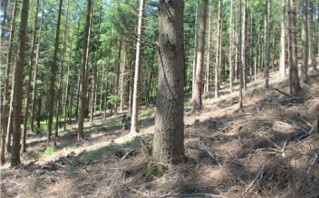Butterfly Conservation have led a research project investigating the biodiversity of a conifer plantation that is managed using Irregular forestry (a type of continuous cover forestry). Continuous cover forestry involves the selective removal of trees, rather than clearing large areas at once, which maintains a canopy and promote forests with increased structure and mixes of both conifer and broadleaf trees. Conifer plantations are often considered poor for biodiversity, including moths, due to the high intensity of management. Novel management techniques such as Irregular forestry, which are more sustainable, has the potential to improve conditions for biodiversity within conifer plantations. This occurs as the technique leads to the creation of mixed plantations (conifer and broadleaf trees) that are structurally diverse (with the presence of an understorey and trees of different ages that regenerate naturally).
The project was undertaken at the Stourhead (Western) Estate and National Trust Stourhead Estate on the border between Wiltshire and Somerset. Stourhead is perhaps best known for its internationally famous gardens. Under the guidance of forester David Pengelly, the estate began converting its management to continuous cover forestry in 1997, and now has some of the best-developed Irregular, conifer plantations in the country. The research project had two aims, (1) to determine the biodiversity found at Stourhead and (2) determine habitat structures important for promoting biodiversity. We recorded the number of plant species, moths using battery-powered portable light traps, bats using acoustic recording devices, and birds using transects.

Results
Thanks to the management of the site there is a surprising level of biodiversity at Stourhead, despite being a conifer plantation. A total of 128 plants, 248 moths, 13 bats and 26 bird species were recorded. Regarding moths, this total includes 27% of the larger moths associated with woodland, a higher number than we expected as surveys were limited to a two-week period in July. The number of bat species recorded, using acoustic detectors, was particularly impressive and is equivalent to 76% of all UK resident species. The species totals included a selection of scarcer species such as the Waved Carpet moth, Barbastelle, and species of conservation concern such as Marsh Tit.
The project identified that four habitat structural features were particularly important for increasing biodiversity in conifer plantations. These included lower ‘basal area’ (basal area is a measurement similar to volume and density, areas with lower density of trees in a more open state was good for biodiversity), higher canopy cover of broadleaf trees, patchy canopy openness and higher quantities of deadwood. For moth species, the number of broadleaf trees and canopy cover were the most important factors. The former is unsurprisingly important to moth species, due to the feeding opportunities this provides for caterpillars.

From this project we know that sympathetic management of conifer plantations can deliver for biodiversity. As the forest at Stourhead continues to develop the habitat conditions will further improve for biodiversity. Importantly, if the adoption of Irregular forestry increases in existing plantations across the UK it could have positive consequences for biodiversity.
To read the full project report please click here.



